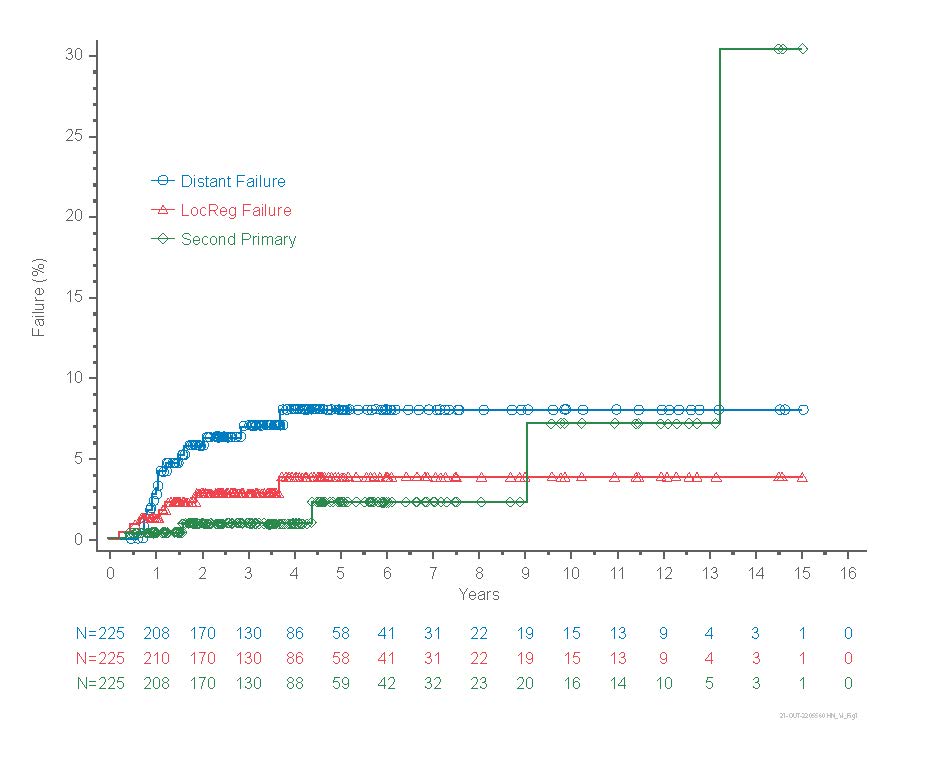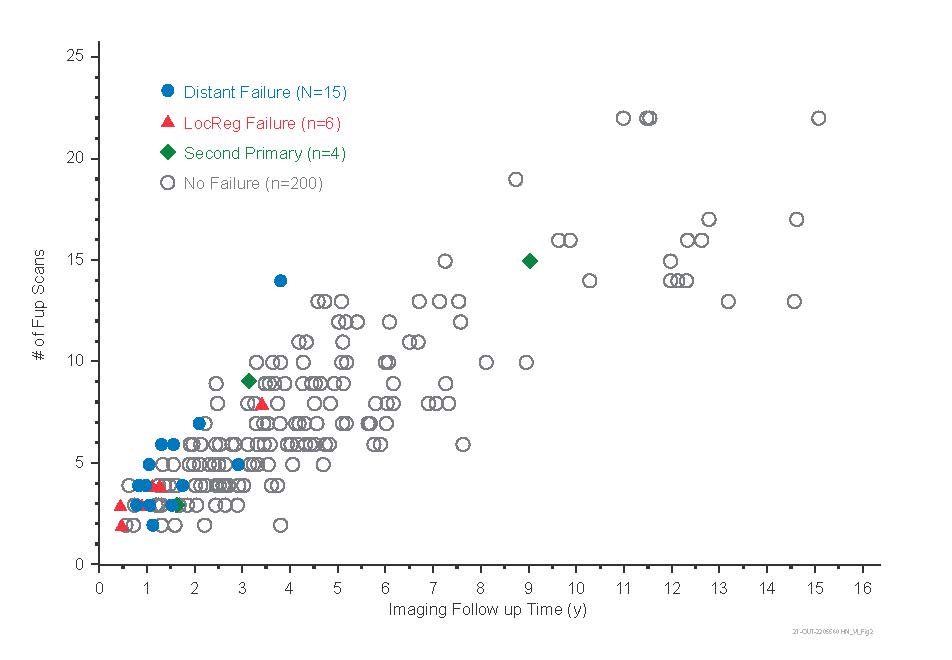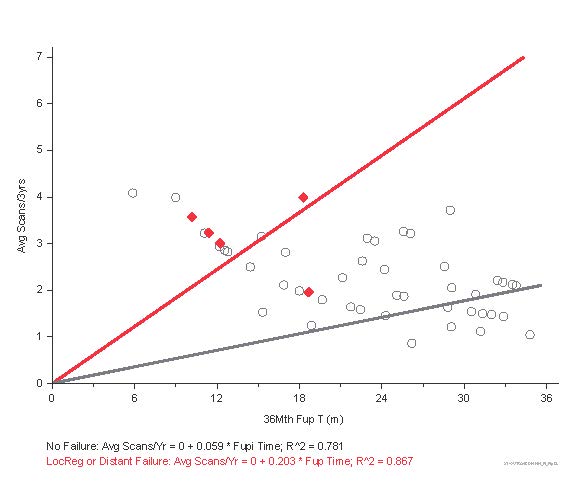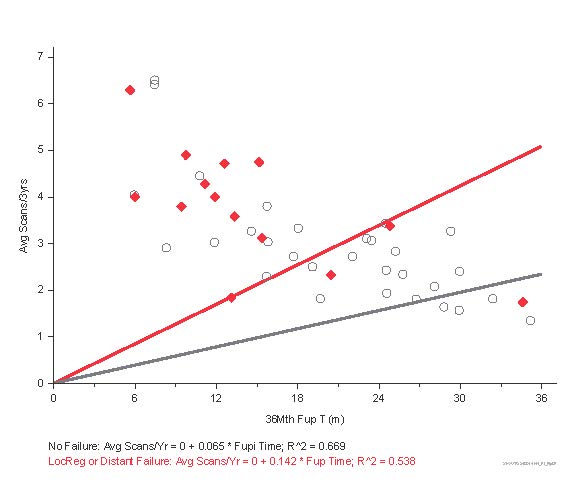Head & Neck Institute Outcomes
Head and Neck Surgery and Oncology
Impact of Routine Surveillance Imaging on Detecting Recurrence in Human Papillomavirus Associated Oropharyngeal Cancer
2004-2015
This study examines the utility of surveillance imaging in detecting locoregional failures (LRF), distant failures (DF) and second primary tumors (SPT) in patients with human papillomavirus (HPV) associated oropharyngeal cancer (OPC) after definitive chemoradiotherapy (CRT).
Disease Recurrence or Second Primary Post Chemoradiation for HPV+ Head and Neck Cancer (N = 225)
2004-2015

| Years | 1 | 2 | 3 | 4 | 5 | 6 | 7 | 8 | 9 | 10 | 11 | 12 | 13 | 14 | 15 | 16 |
|---|---|---|---|---|---|---|---|---|---|---|---|---|---|---|---|---|
| Distant Failure (N = 225) | 208 | 170 | 130 | 86 | 58 | 41 | 31 | 22 | 19 | 15 | 13 | 9 | 4 | 3 | 1 | 0 |
| Locoregional Failure (N = 225) | 210 | 170 | 130 | 86 | 58 | 41 | 31 | 22 | 19 | 15 | 13 | 9 | 4 | 3 | 1 | 0 |
| Second Primary (N = 225) | 208 | 170 | 130 | 88 | 59 | 42 | 32 | 23 | 20 | 16 | 14 | 10 | 5 | 3 | 1 | 0 |
HPV+ = Human Papillomavirus Positive
Number of Follow Up Scans Over Time by Site of First Failure (N = 225)
2004-2015

Average Number of Scans Per Year for First Three Years Post Treatment For Patients With Stage T0-T2 and N0-N1 Disease (N = 121)
2004-2015

Average Number of Scans Per Year for First Three Years Post Treatment for Patients With Stage T3-4 or N2-N3 Disease (N = 104)
2004-2015

Surveillance imaging seems most useful in the first 2-3 years post treatment, and is particularly important in detecting DF. Surveillance scans for SPT has a low yield, but should be considered for those meeting lung cancer screening guidelines.
